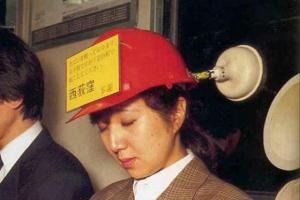Modern technologies are actively being introduced into daily life people and make their everyday life more comfortable, convenient and safe. Smart Home automation is carried out using the MiMismart electronic system and a special application for mobile devices. The software and hardware complex provides control of illumination, temperature and air composition, operation of the boiler room, electrical outlet network, as well as a number of other parameters. This is necessary for management household appliances, as well as almost any systems in the house and outside through built-in automation. The equipment of the complex is compact, reliable and has low energy consumption. Automation of control of life support systems within the framework of the Smart Home concept will make it possible to monitor their condition remotely from anywhere in the world. The only condition is the availability of mobile communications and the Internet.
Functionality of the Smart Home system
Complex automation of not only an apartment, but also a separate building is possible. The MiMismart system can change its configuration and is compatible with many previously installed equipment.
Automation for Smart Home allows you to control:
- lighting (turning on the light in the room you enter, or in the area when you drive up to it);
- servomotors for curtains and roller shutters (closing them when using a cinema or at night, and later opening them);
- heating and underfloor heating (setting radiator parameters, as well as heating the floor to comfortable temperature to your awakening);
- air conditioning and ventilation (setting temperature and humidity, fresh air flow, etc.);
- security alarm system (scenarios “I left”, “Security” will prevent illegal intrusion into the house, and the automated complex is able to detect water and gas leaks from pipelines, shut off their supply and notify you and the dispatcher about the emergency);
- multiroom (music, home cinema, intercom).
The Smart Home software and hardware complex from MiMismart involves the automation of many control processes. Thus, a person gets rid of the need for constant monitoring.
Complete solutions
Equipment
As part of the apartment automation system, country house or any other separate building includes:
- statistics and control block,
- GSM module with SIM card to provide Internet access,
- network gateways,
- automation control modules,
- sensors,
- multi-channel load switching modules.
Interface
Controlling a Smart Home with a building automation system is possible directly from the built-in remote control or remotely from a laptop or mobile device (tablet, smartphone). Moreover, the number of gadgets used is unlimited. In addition, it is possible to disable the remote control mode from the remote control, which eliminates external interference. High reliability of protection for the Smart Home home automation system is achieved through the use of complex encryption methods. Similar programs are used in banking to ensure maximum resistance to hacking. At the same time, mobile applications that control the system and automation easily adapt to the user in color, appearance and icons, and also allow you to create your own scenarios.
To ensure system operation automatic control equipment in the house uses a single-wire interface of the OW type. The twisted pair cable is installed discreetly and does not make any changes to the interior. Smart Home Automation involves purchasing the necessary components, installing them, connecting them and setting them up.
Automation is increasingly being introduced into everyday life modern people. And if earlier automated production could be considered the pinnacle of progress, now even everyday life, an apartment or a private house, you can quite simply radically improve it by introducing the “smart home” concept there. After all, today “smart home” systems are designed not only to optimize energy costs, but, first of all, to make a person’s life more comfortable. The capabilities of modern smart home systems will be discussed in our article.
To combine home cinema, lighting control, water supply, video surveillance system, climate control, power supply and access control, gas supply and multiroom into one system - this is the task that the smart home system solves today. Let's go through each of the points sequentially, and consider what modern automation systems can do in relation to our everyday life.
Climate control
The microclimate of public and residential premises greatly affects our performance, and our health in general. Indoor air conditions vary depending on the operating modes of climate control equipment. Heating and ventilation equipment, lighting equipment, and other devices - all of this together has a certain overall effect on the human body, on well-being, on health in the end. And the technology is becoming more and more complex.
Automated systems not only allow us to quickly monitor and manage all this equipment, but ultimately take care of our health. Monitors using sensors Current state air in the room, and through control panels the operating modes of air conditioners and supply ventilation, and heating. That is, the climate is adjusted automatically to the person’s requirements, which are specified by preliminary settings.
So climate control allows the following. Air quality control depending on the weather outside and the time of day. Timely ventilation of rooms by controlling heating and opening windows.
Control of heated floor operation. Maintenance optimal temperatures and humidity individually in each room. For example, a food storage room requires its own special climate, which differs from the climate in the living room or kitchen, etc.
Control of temperature, humidity, intensity of fresh air flow, air purification system and ozonation. In each room, the conditions should be different, most suitable for each family member, taking into account the place in the house where this room is located: some to the north, some to the south - and management in each case will be individual.
Drafts are not allowed in the nursery, the bedroom should be warmer, the floor in the bathroom should be heated on time, and there is no need to keep it warm all the time. That is, the control is optimal so that the energy saving effect also takes place.
The setting varies according to the lifestyle of the family or group. On weekends, the heat supply to work areas is reduced or turned off.
The autonomous heating system of a country house - on the contrary, is turned on on weekends. The boiler is turned on remotely or switched to economy mode, etc. Everything is rationalized to combine efficiency and comfort of life. This especially applies to water supply, electricity supply and heat supply.
Entertainment
It’s been a long time since you’ve surprised anyone with a home theater. But manage from different places sound and video, as well as stereo systems located throughout the apartment - these functions are implemented using the “smart home” system.
The home theater is connected to an automated system, and the entire complex of multimedia equipment, along with auxiliary devices, is harmoniously integrated into the apartment. There can be several audio and video sources, and they can be multi-channel: Acustic systems, receivers, plasma panels, projectors - everything is controlled directly or remotely from anywhere in the room.

You can watch movies and shows, listen to music in all rooms or just a few, program a scenario and activate it with one button from the touch panel or from the remote control. The script program can be entered into individual conditions: the blinds close, the lights go out or become less intense, the plasma panel turns on, the projector extends, the player starts.
Script programs can be edited, timed for automatic launch, and related settings for watching movies can be set, for example, turning on the air conditioner near the place where the home theater is installed if the weather is hot.
The “multiroom” function is exactly the function that allows you to hear sound or watch video in several independent areas of the apartment. It becomes possible to adjust the volume from any room, each of which has push-button or touch, wall or tabletop control panels, and also has remote controls remote control.
What could be a more expressive sign of the intelligence of a smart home system than smart control lighting? Lighting in a smart home is truly smart and therefore economical. Electricity resources in an apartment, house or office are used as economically as possible, without unnecessary waste.

The advantage of an automated lighting control system is that, based on data from external and external lighting sensors, as well as timers, it allows you to turn on and off the light of the desired brightness and only where it is really necessary. In addition, they open up wide scope for creativity. In addition, the option to simulate the presence of hosts is available.
The modern “smart home” system is a complex of technologies for comfort, safety and efficiency. Stability is ensured by integration in the event of a centralized power supply failure, so that the electronics remain operational at all times.

Batteries and inverters, chargers and liquid fuel generators are installed in the system and integrated in software. In the event of a power outage, the system will automatically switch to a backup source, as a last resort The batteries will continue to power security systems and critical equipment.
Automated security system
The smart home system includes, as part, security and fire alarm and video surveillance, so that both the owners’ stay in the house and their absence would be safe for both the house and the owners themselves. A video intercom and a perimeter security system can be installed here to protect against uninvited guests.
As for security in general, the “smart home” system is capable of providing: protection against short circuits in electrical wiring, protection against water leaks, protection against gas leaks by triggering a smoke sensor and turning on an autonomous fire extinguishing system, autonomous power supply, alarm, automatic call to the rescue service .
Thus, a “smart home” will protect itself and its owners from any dangerous situations, because the system can include: automated gates and doors, automatic security shutters, a video surveillance system, security alarm, presence sensors, smoke sensors, gas leaks, etc.
Controlling access to the premises, video surveillance of adjacent areas, turning on floodlights when penetrating the perimeter are three more pluses in the treasury of advantages. Through the Internet, the owner will be able to remotely receive a picture from any of the cameras of the video surveillance system, this also includes the video baby monitor function.
Video surveillance as such

Intelligent video surveillance is one of the main components modern "smart houses". Video cameras connect to the Internet and allow you to access them from anywhere in the world.
The owner can be abroad, while quickly observing any of the zones, and the video cameras here can be controlled. For example, controllable cameras are usually equipped with gates, courtyards, nearby buildings, and areas near apartment doors. The operation of the video camera can be interfaced with a motion sensor, and signals can be sent to the control center.
The Internet and satellite television networks, as the main sources of information, are conveniently integrated into smart home systems today. While inside the house, the owner can receive information and send it to various rooms, televisions and monitors. This also applies to the transmission of information received from video surveillance systems. Thanks to the multiroom function, all these possibilities open up. Of course, it is possible to set up remote control via the Internet if desired.

Control with mobile phone via direct voice commands and SMS is available today for owners of smart home systems. You can also set up phone call forwarding to your mobile phone if you are away from home, even if you are in another country.
If necessary, you can let guests into the house by simply sending the appropriate command from your mobile phone to your automated system. Similar opportunities can be conveniently implemented via the Internet; all you need to do is find Wi-Fi for your smartphone or laptop.
Andrey Povny
Films often show a living space that seems to live its own life. Light bulbs light up with a wave of your hand, curtains open, and music plays after a certain word. All this equipment is an intelligent home system, and we propose to consider how to make a smart home with your own hands, what is needed for this, and also what is the diagram of such a system.
Smart home - what is it?
Smart home refers to home automation, which is a residential extension of building automation. Home automation can include centralized control of lighting, HVAC (heating, ventilation and air conditioning), home appliances, gate openers, door openers, GSM and other systems to provide improved convenience, comfort, energy efficiency and security. It should be noted that for some categories of the population (elderly, disabled people) this event may become necessary.
Photo – Smart home distribution ideas Photo – Simple smart home
Photo – Simple smart home With the latest introduction of SMART technologies into our lives, many can no longer imagine their lives without automatic installations, software equipment, we need wireless Internet, household appliances.
Home automation refers to the use of computer and information technology to control home appliances and their functions. It can range from simple remote lighting control to complex computer/micro-controller based networks with varying degrees of intelligence and automation. Home automation should mainly be as simple as possible.
 Photo – Smart door lock
Photo – Smart door lock Advantages of using a smart home in an apartment based on PIC or WAVE:
- Economical expenditure of time on daily setup of various mechanisms, receiving calls, sending mail;
- Use of gaseous or liquid fuel materials, and later the use of electricity, allowed increased automation in heating systems, reducing the labor required to manually refill the heater and furnace.
- The development of thermostats allowed for more automated control of heating, and later cooling;
- This is how security is often carried out industrial facilities, residential premises;
- As the number of controlled devices in a home increases, their interconnection increases. For example, a furnace can send notifications when it needs cleaning, or a refrigerator when it needs servicing.
- IN simple installations, smart can turn on the light when a person enters the room. Also, depending on the time of day, the TV can tune to the desired channels, set the air temperature, and lighting.
A smart home can provide an interface to access household appliances or automation to provide control and monitoring on your smartphone, through a server, mini Smart for iPhone, iPod touch, as well as using a laptop computer (special soft: AVR Studio is required).
 Photo – Home control via tablet
Photo – Home control via tablet Video: Schneider Electric smart home system
Smart home elements
Home automation elements include sensors (such as temperature, daylight, or motion detection), controllers, and actuators such as motorized valves, switches, motors, and others.
 Photo – House control diagram
Photo – House control diagram This heating, ventilation and air conditioning, HVAC can control temperature and humidity, for example, an internet control thermostat allows the homeowner to remotely control the building's heating and air conditioning systems, the system can automatically open and close windows, turn on radiators and boilers, and heated floors.
Lighting
These lighting control mechanisms can be used to control household lights and appliances. This also includes a natural lighting system, the operation of blinds or curtains.
 Photo – Smart home diagram
Photo – Smart home diagram Audio-visual
- Remote control presence effect (This is the most modern technology, which is used to increase security). It involves turning on the lights and playing music.
- Presence simulation
- Temperature regulation
- Brightness adjustment (electric lamps, street lighting)
- Security (alarm, blinds).
How to make a smart home
You can make an intelligent system with your own hands, the most a budget option– this is setting up control of lighting in the house or turning on the computer.
 Photo – Smart home control option
Photo – Smart home control option To make a lamp that will light up on its own, you will need to connect special equipment to it. There are several options for solving this problem:
- Install an acoustic relay (1 or x10-wire);
- Attach the dimmer;
- Connect a motion sensor.
The easiest way to work is with a sensor. It is sold in any online store, you can buy a duct device, or you can develop your own according to your parameters. The only note is that you cannot install an incandescent lamp with such a device, it may not withstand the load and explode, it is better to work with an LED one.
 Photo – Smart home concept
Photo – Smart home concept Another “smart” silent option is a dimmer. Here you will need to touch the lamp, depending on the number of touches, the speaking device will change brightness. This is very convenient to use on a lamp in a bedroom or children's room.
To set up temperature control and regulation, we need a multi-channel system. Central scheme temperature and humidity control consists of:
- Sensors (ds1820) that measure the physical state of liquid and air.
- Controllers (rfm12), which can be simple physical components or complex special-purpose devices or embedded computers.
- Lunex drives that respond to controller signals.
Most modern way– this is to buy all the components of a smart home, wires, thermostats. Then install devices in each room, one thermostat for the radiator and one for the boiler. You will also need a controlled unit, or the “brain” of the entire system. It is recommended to install it on the heating inlet pipe.
 Photo – Smart home system
Photo – Smart home system The easiest way to install a video surveillance and alarm system. Fundamental provisions for installing security systems:
- You need to connect sensors on the windows, doorways, electricians will be the most productive there;
- The most difficult thing is to select a board; the smart home controller, the operation of mediocre parts, and the signal level depend on it;
- Many experts believe that indicators should be mounted at floor level. About 20 cm from the baseboard, this increases efficiency;
- It is advisable to establish constant monitoring and establish a digital system of contact with the security service. Often, responsible owners install a special program on their personal computer, which allows them to control the operation of the system from anywhere where there is Internet (Elena Tesla and her book: “Smart Home: How to Do It Yourself” advises doing this; there are also other solutions there ). You can enable SMS notifications.
A smart home is a very convenient way to make your life easier; often the entire system is purchased completely (Arduino, KNX, Linux).
The cost of each system is individual. The most popular brands are the following: beckhoff, gira, lpt, redeye, Smart Switch IOT screen, teleco. We recommend that before building such housing, you consult with specialists; they will help you calculate the load level and calculate the power consumption.
 Photo – Light control via phone
Photo – Light control via phone To get ideas, you can scroll through V.N. Gololobov’s “Smart Home” with your own hands, DJVU or PDF, look at our photos and video instructions, read the advice of famous masters.
What is a smart home?
“Tiny robot mice poured out of holes in the wall. All the rooms were swarming with small, fussy cleaners made of metal and rubber. They hit the chairs, twirled their bristly rollers, ruffled the carpet pile, quietly sucking out hidden dust particles. Then they disappeared, like unknown aliens, scurrying into their shelters. Their pink electric eyes went out. The house was clean."
Are these lines familiar? This is an excerpt from the translation of the story “There Will Be Gentle Rain” by the American science fiction writer R. Bradbury half a century ago, in which an empty automated house monitors cleanliness and maintains the household schedule established by the owners.
In the 1950s, such “smart” houses could only be dreamed of or read in popular science magazines and books. Conceptual developments of a comfortable automatic home, if there were any, were called differently. There were still about 20 years left before the term “smart home” appeared in public.
Motion sensors, heated floors, air conditioners, ventilation systems and heating boilers They worked regularly, but independently, not knowing about each other’s existence. Needless to say, a person had to take care of the comfort of his home himself. If the window was open and the air conditioning was turned on, then the temperature and humidity had to be adjusted manually, checking the readings of the outdoor thermometer with the room thermometer.
Smart home... Technology?
The mass society of the mid-second half of the 20th century was also well aware that a home could be smart, just as the design engineers of black-and-white TVs knew that they would later release color models. Meanwhile, without publicly available technologies and open standards, there was no talk of any kind of widespread and inexpensive “smart home”.For comparison, the smart home of American billionaire philanthropist Bill Gates, designed and built in the late 1980s, cost the famous entrepreneur a whopping $63 million.
In 1975, confusion over data transmission standards for home systems began to fade. The X10 protocol was introduced to the public - the first open industrial standard for data transfer in home automation systems. It was a communication protocol for electronic devices that operated at 60 Hz and 110 V in a typical home environment. electrical network. This somewhat limited the market in countries where compatible devices could be used. They definitely wouldn’t have worked in the Soviet Union.

The future owner of a home automation system according to the X10 standard only had to purchase required modules, insert them into sockets and connect household electrical appliances to the home network through them in order to freely control them. Of course, at that time, the introduction of working modules for remote control via modem or high-speed control centers with programmable scripts could not happen.
Only in 1978 did the first modules according to the X10 standard appear on the market: a 16-channel command console, a module for controlling a lamp, a module for controlling an electrical appliance. Subsequently, switch modules and a timer module appeared. In theory, 1978 is considered by many historians to be the starting point in the history of home automation and smart homes. At the same time, the goal of the first home automation systems was automation, and not the creation of control scripts engineering communications And public utilities residential building.
Smart home
In the early 1990s, the first commercially successful solutions appeared and the young market for home automation systems was flooded with numerous companies offering various standard solutions, which are called “turnkey”. This surge was caused by the emergence of a new international electronic system standard in 1992, which regulated the production of equipment for “smart homes”, which made it possible to produce systems and individual products by almost any commercial company or firm.New systems moved away from simply automating lights or household appliances and offered scenarios, for example, a “sleep” scenario, where the power of household lamps was reduced, electrical appliances were turned off except for the most important ones, such as the refrigerator, and the air conditioner in the bedroom was turned on, lowering the temperature to a comfortable level.

The “security” scenario was triggered when the owner left the house, and home appliances, coupled with lighting fixtures, began to simulate the residents’ normal daily routine, showing potential thieves and criminals that the house was not empty. In the event of illegal entry, an alarm was triggered, which could not only notify the area with a strong sound signal about the fact of a break-in, but also turn on all household appliances and lighting and scare away a potential criminal.
By the end of the 1990s, the market situation improved, because Buyers were given the opportunity to choose between products from different companies and different price categories.
So at what point did home automation systems become known as “smart homes”?
In fact, the term “smart home,” which is so familiar to our compatriots, is, in a way, a hodgepodge of meanings from the English-speaking world. In the Western understanding, there are several definitions of a smart home, depending on the format, scale and purpose of use: these are home automation, smart home and smart house. Each of them denotes a strictly defined market sector.
Accordingly, home automation is home automation systems; smart home - smart houses; smart house - smart buildings. In Russian, the “smart home” has absorbed all of the above concepts and added new ones. For example, multiroom systems (control of multimedia and home theater, music center), which in the West do not strictly belong to the modern home smart home and often represent ready-made solutions comparable in complexity and cost to smart homes.
Turnkey smart home
“Smart houses” for Russians are, first of all, compact home solutions that allow you to automate routine processes in the house: turning on and off the lights; check the condition of electrical appliances, for example, an iron or refrigerator; install a video nanny to monitor your small child; adjust the operation of climate control systems (warm floors, heating, ventilation, air conditioning, etc.); do all this remotely, preferably from a mobile device, not from home, but from work, on the road, or in another city, or even abroad.
Today there is no need to think about how to make a smart home? Now ready-made solutions There is a sufficient amount of this level on the market. This state of affairs was caused by the technical boom of the 1990s - early 2000s in the countries of the Asia-Pacific region, mainly in China, Vietnam, Malaysia, which were able to ensure mass production of relatively cheap to manufacture and available on the retail market as microcontrollers, as well as individual solutions for automation systems and smart homes.
Smart home system
In the world, most commercial and residential real estate properties are equipped with automation systems or smart home systems, but in Russia this process is still in its infancy. It is already clear that automation of the management of an entire building provides many advantages, for example, it reduces the cost of operating personnel, increases the level of comfort for guests, optimizes energy consumption, water and gas supply, and reduces environmental damage. Add tagsThe concept of a “smart home” is divided into several components and has different methods of implementation. Firstly, the concept of a “smart home” is associated with the efficient consumption of resources: energy saving, water saving. Secondly, with the organization of security: video surveillance, alarm system. Thirdly, with automatic control of the work of all engineering systems and electrical appliances: water leakage sensors, short circuit protection, etc.
The fourth element of a “smart home” is increasing comfort, that is, automating actions that a person usually does independently, from automatic switching on light to controlling the coffee machine using a smartphone and tablet. According to experts, the market for home automation equipment and related Internet of Things (IoT) smart devices experienced rapid growth last year. A clear indicator of its prospects is the interest from IT giants Google and Apple.
But from an architectural point of view, the main task of a modern “smart home” is not the ability to control household appliances from a distance, but to strive for zero energy consumption. This can be implemented different ways. Just as one of the world's leading architects Ben Van Berkel (UNStudio) does in his recent project of the villa W.I.N.D. , which combines automation and comprehensive control of all systems, or make do with the “entry” level - a DIY (Do-It-Yourself) “smart home” kit for self-installation.


The division between control systems that can be installed by the user himself and those that require a professional installer for installation/configuration is gradually blurring. On the one hand, DIY systems are becoming more and more sophisticated, on the other hand, professionally installed systems are becoming increasingly easier to set up and use, and have stylish design and a convenient menu. At the same time, they solve a variety of problems, for example, organizing climate control in a cottage with a winter garden.
When thermal comfort and protection from the glare of the sun require shading the window, and ensuring visual comfort and the use of daylight without obstructing the light, a dilemma arises that can be solved with the help of external solar blinds and the universal control system WAREMA climatronic ® The control system optimally selects the angle of rotation of the slats and the height of the curtains depending on the position of the sun, in order to cut off direct hits sun rays into the room and provide pleasant diffused light. This cannot be done manually.

The compact WAREMA Climatronic ® sensor measures sun brightness, precipitation, temperature, wind speed and direction for all building facades. Based on this data, a comfortable climate is created in accordance with personal requirements. Programming is carried out on the device itself or on a computer using special software. In this case, the control of up to 7 thousand drive mechanisms can be programmed. In addition, WAREMA climatronic ® makes it possible to control all connected consumers using the radio hand-held remote control of the WAREMA EWFS unified radio control system. So, without getting up from the sofa, you can separately control the sun protection device, turn on the lights or artificial climate control, and gradually dim the lighting in the evening.
There are installations in which more complex scenarios need to be worked out, including not only lighting scenes and climate control, but also security systems and energy control modes. This is the area of complex projects created using the KNX protocol. By the way, Warema is also working in this direction. To transmit commands to all the components that control the house, you need a system that can interact with individual devices in the same “language”. This task is carried out by WAREMA KNX ® bus technology.

Images by theneura.com, electronicsoftthings.com, myblossom.com








